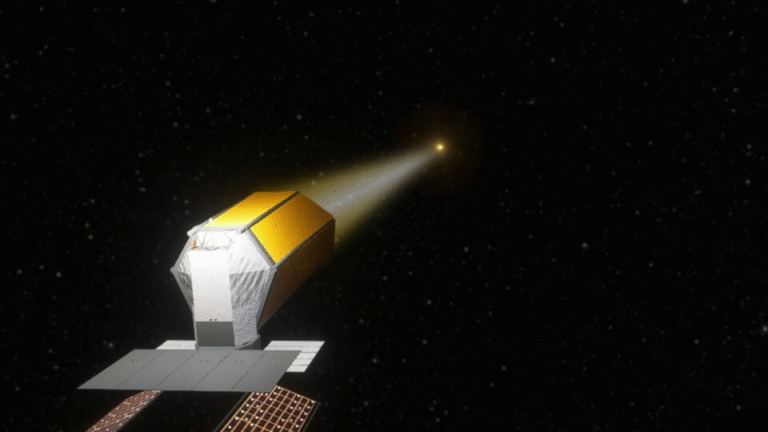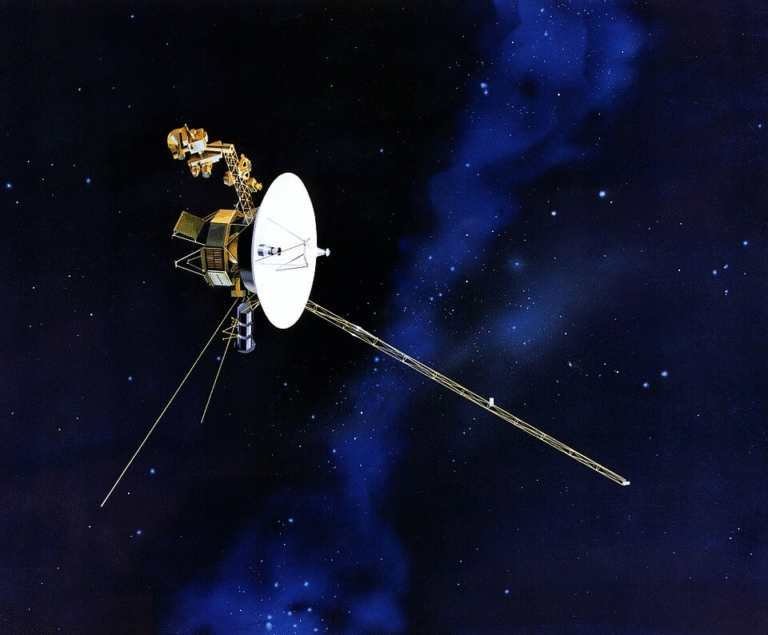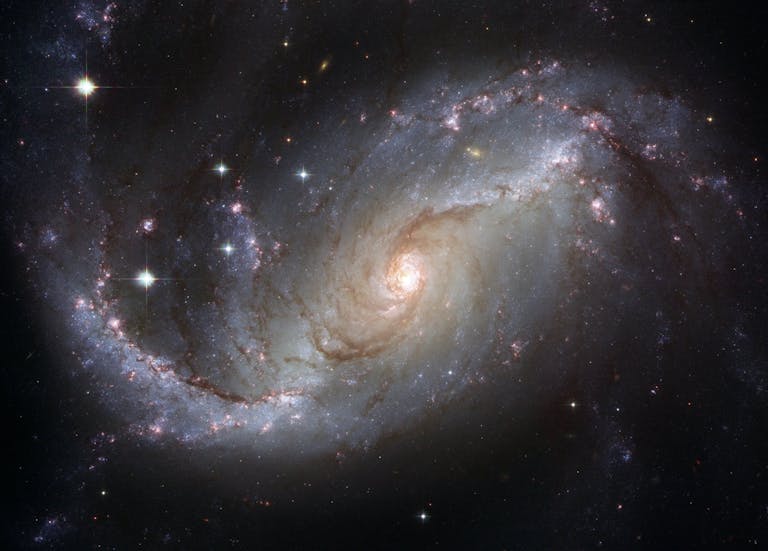Many Mini-Neptunes Once Thought to Be Molten Worlds Might Actually Have Solid Surfaces

A new study is shaking up what astronomers thought they knew about one of the most common types of planets in our galaxy — mini-Neptunes, or sub-Neptunes. For years, scientists assumed these distant worlds were covered in vast oceans of molten magma. Now, new research led by Eliza Kempton from the University of Chicago suggests that many of them might actually have solid, rocky surfaces, compressed by incredibly thick and heavy atmospheres.
What Are Mini-Neptunes?
Mini-Neptunes are planets that fall between Earth and Neptune in size — typically two to four times Earth’s radius. They have thick atmospheres made mostly of hydrogen, helium, and sometimes water vapor, wrapped around a rocky or metallic core. These worlds are among the most common exoplanets we’ve discovered so far, yet strangely, our own Solar System doesn’t have a single one.
Because we can’t directly observe their surfaces, scientists have long relied on indirect clues — like how much light a planet blocks as it crosses its star, or how its atmosphere absorbs different wavelengths of starlight. Based on those measurements, it was once thought that most mini-Neptunes must be lava planets — worlds where intense pressure and heat kept their surfaces in a molten state.
But the new findings suggest that might not always be the case.
The Research Behind the Discovery
The study, published in The Astrophysical Journal Letters in November 2025, was led by Eliza Kempton with contributions from then-undergraduate Bodie Breza and postdoctoral researcher Matthew Nixon, now at Arizona State University. Using advanced computer simulations, the team explored how various combinations of atmospheric composition, pressure, temperature, and planetary mass could affect what’s happening beneath those thick gaseous layers.
The turning point came when scientists studied GJ 1214 b, a well-known exoplanet located about 48 light-years away in the constellation Ophiuchus. Earlier data from the James Webb Space Telescope (JWST) hinted that GJ 1214 b’s atmosphere might contain heavier molecules — not just hydrogen and helium, but perhaps water vapor and other compounds. That meant the planet’s atmosphere was likely denser and heavier than scientists had expected.
A heavy atmosphere like that can create immense pressure on the surface below — hundreds or thousands of times greater than what we experience on Earth. Under such crushing weight, molten rock can actually solidify again, even at extremely high temperatures. It’s similar to how carbon becomes diamond deep within Earth’s mantle under extreme pressure. In other words, some mini-Neptunes might not be oceans of lava after all, but worlds with solid rock surfaces buried beneath thick blankets of gas.
Simulating Alien Worlds
To test this idea, Kempton’s team ran a series of planetary simulations that varied parameters like:
- Planet mass (how big and heavy the planet is)
- Envelope mass fraction (how much of the planet’s total mass is made up of atmosphere)
- Mean molecular weight of the atmosphere (heavier molecules like water vs. lighter ones like hydrogen)
- Temperature and pressure at the boundary where the atmosphere meets the rocky layer
The results showed that many sub-Neptunes could fall into a “solid surface” regime rather than a molten one. In other words, while some planets do have magma oceans, others — especially those with denser atmospheres — are likely to have solidified silicate surfaces hidden deep below the gases.
The researchers describe it as a sort of either-or scenario: depending on a planet’s atmosphere and temperature, it either ends up with a molten “lava floor” or a compressed solid surface.
Why This Matters
Mini-Neptunes are everywhere in our galaxy, and understanding them is essential to figuring out how planetary systems form and evolve. Our Solar System lacks any planet of this type, which means we can’t study one up close. These worlds are key to bridging the gap between rocky super-Earths and gas giants like Neptune.
This research also forces scientists to rethink their models of how planets cool, solidify, and interact with their atmospheres. If many mini-Neptunes actually have solid surfaces, that changes how we interpret their atmospheric data and thermal behavior.
Even though these planets aren’t likely to be habitable — their pressures and temperatures are far beyond anything human-friendly — knowing whether they’re solid or molten helps us understand their chemistry and evolution. It could even affect how we search for potentially habitable planets in the future.
What Determines Whether the Surface Is Solid or Molten?
According to the research, several key factors influence whether a mini-Neptune’s surface remains molten or becomes solid:
- Atmospheric Composition (Mean Molecular Weight):
If the atmosphere contains heavier molecules like water vapor or carbon dioxide, it becomes denser. A denser atmosphere exerts more pressure, making it more likely that the surface will solidify. - Envelope Mass Fraction:
Planets with thicker atmospheres have greater surface pressures. The more massive the envelope, the higher the pressure at the boundary with the rocky mantle. - Temperature and Cooling Rate:
A cooler atmosphere or an older planet will be more likely to have a solid surface, since the heat needed to maintain molten magma dissipates over time. - Pressure at the Radiative–Convective Boundary:
This layer in a planet’s atmosphere affects how heat is transported. A higher boundary pressure can suppress magma formation, while lower pressure could allow it. - Planetary Mass:
More massive planets naturally generate higher internal pressures, but depending on composition, this might either maintain or quench molten rock layers.
Rethinking Planet Formation
Before we discovered thousands of exoplanets, astronomers assumed other solar systems would look a lot like ours. We thought planetary formation followed a neat pattern — rocky planets near the star, gas giants farther out. But mini-Neptunes don’t fit this model. They show that planet formation is far more diverse and complex than previously imagined.
By studying these worlds, researchers can test different models of how planets accrete gases, lose heat, and evolve over billions of years. This knowledge feeds directly into the search for habitable worlds, since understanding how planets form tells us where to look for Earth-like ones.
What About GJ 1214 b?
GJ 1214 b remains one of the most studied mini-Neptunes, and it’s a perfect example of how complex these planets can be. With a mass about eight times that of Earth and a radius roughly 2.7 times larger, it’s neither a pure rocky world nor a full gas giant. Observations from JWST show that its atmosphere likely contains water vapor and methane, hinting at a heavy composition.
Under those conditions, the surface would experience such intense pressure that molten rock would crystallize back into solid silicate minerals. So instead of being a lava planet, GJ 1214 b may be a rocky world wrapped in a crushing, hazy atmosphere.
Implications for Future Observations
As telescopes like JWST and the upcoming Extremely Large Telescope (ELT) continue to gather data, understanding what’s below the atmosphere becomes increasingly important. When astronomers analyze light from exoplanet atmospheres, they need to know whether that light is interacting with a molten or solid surface beneath — because the two produce very different signatures.
This study gives scientists a new framework for interpreting such observations. It also reminds us that even in a galaxy full of seemingly similar planets, the details matter — a small change in atmosphere composition or pressure can completely alter what’s happening beneath the clouds.
The Bigger Picture
The discovery that many mini-Neptunes might have solid surfaces doesn’t make them habitable, but it changes how we think about planet diversity. The universe isn’t just filled with Earth-like or Jupiter-like worlds. There’s a wide spectrum in between, and these sub-Neptunes are proof of that complexity.
This research adds a crucial piece to the puzzle of how planets form, evolve, and interact with their environments. It reminds us that our Solar System might be the exception, not the rule — and that somewhere out there, countless worlds are waiting to surprise us.
Research Paper: Not All Sub-Neptune Exoplanets Have Magma Oceans – The Astrophysical Journal Letters (2025)





